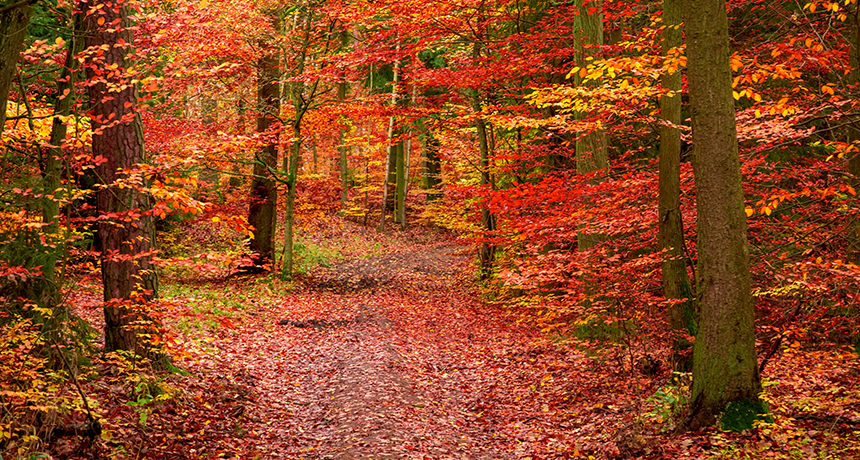Question Sheet: A Change in Leaf Color

Fall foliage transforms trees of green into stunning shades of yellow and red.
Shaiith/iStockphoto
SCIENCE
Before reading:
- What types of trees lose their leaves in the autumn?
- How colorful is fall foliage in your part of the country?
During reading:
- What is chlorophyll?
- What happens in photosynthesis?
- What’s unusual or unexpected about leaves turning red?
- Give three reasons why leaves might turn red?
- How are the colors of leaves affected by weather conditions?
After reading:
- Many of us find leaves of different colors to be beautiful. Science offers
explanations for this beauty. Do you think it’s important to understand the reasons why something is beautiful to enjoy it fully? Why or why not?
- No one knows exactly how global warming will affect trees and forests. What are some possible effects or changes that might occur?
- Do you think it’s strange that someone studying leaves and their colors
would be at a university in Florida? Why or why not?
- Pick a fruit or vegetable that has a bright color. Why does this fruit or
vegetable have that color? What can colors say about the healthiness of a food?
- Name three types of trees that are especially colorful in the fall.
- What gives red-colored plants their color?
SOCIAL STUDIES
What conditions produce the best leaf colors in the autumn? Where would you travel to see such colors? See Fall Colors – U.S. Department of Agriculture Forest Service.
LANGUAGE ARTS
- In two or three descriptive paragraphs, write down how you feel about the
end of summer and the beginning of fall, as leaves start changing color.
- Collect fallen leaves from several different trees. Draw a picture of each
leaf, observing closely its colors and patterns. How do the leaves differ? What details do you notice when you look at them closely?
MATHEMATICS
Collect a tree leaf. Lay it down on a piece of graph paper on which you have drawn and labeled the x and y axes. Trace the leaf’s outline on the graph paper. Remove the leaf. Estimate the leaf’s area by counting the squares within the drawn outline. Select 10 points on the drawn outline that when connected will create an outline of the leaf’s shape. List the coordinates of these points. Plot the points on a separate sheet of graph paper. Can you identify the leaf from the graph of its outline? Is the leaf symmetrical?